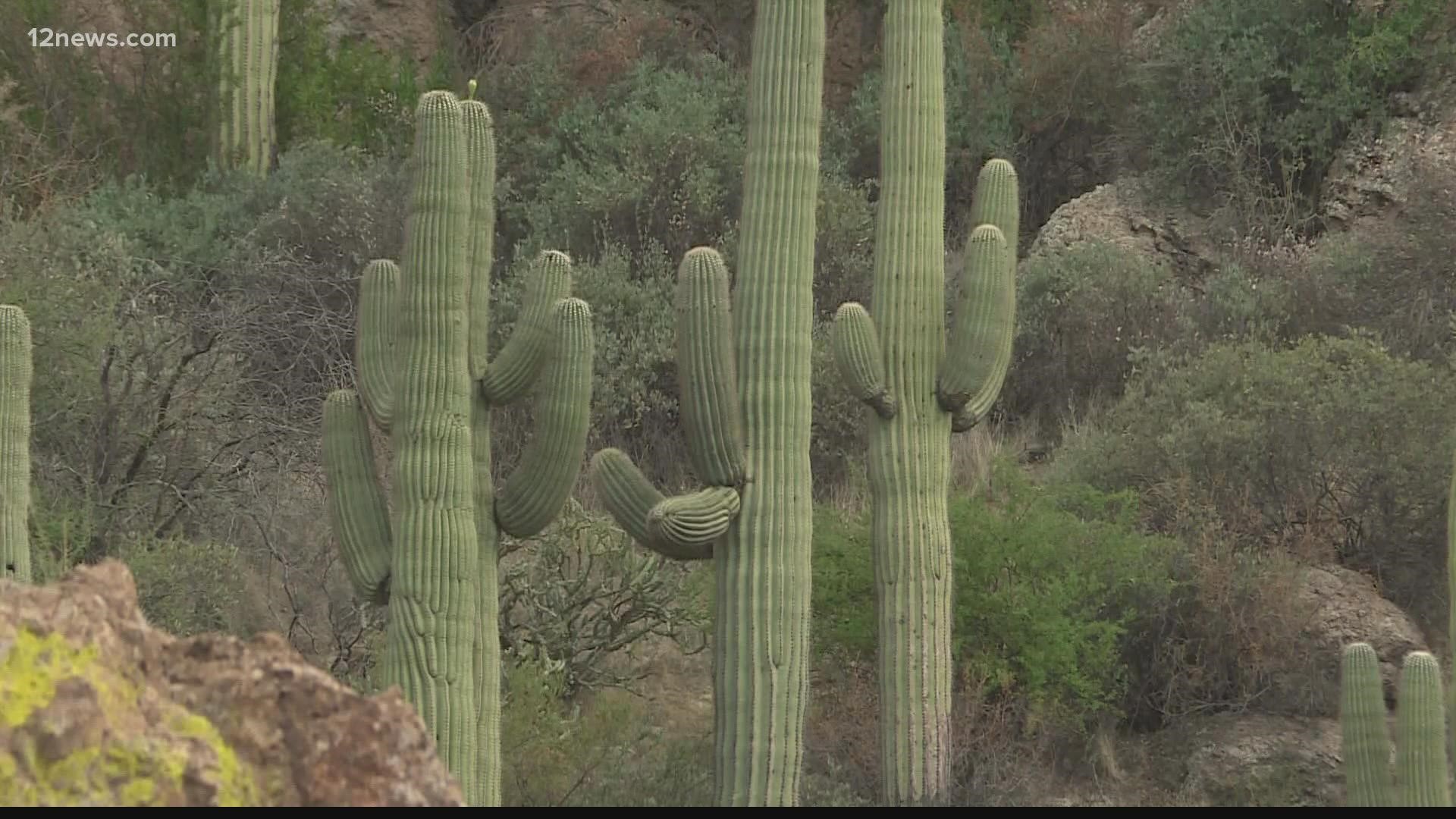TUCSON, Ariz. — Editor's note: The above video is from a previous broadcast.
It's an Arizona icon: A saguaro standing tall in the desert with a hot sun beating down on it. The image is pure Arizona analogy: Cacti are made to withstand heat and low precipitation levels.
But what if even the cacti can't withstand climate change?
Researchers of a new study, "Elevated extinction risk of cacti under climate change," put that belief to the test. The researchers, led by University of Arizona doctoral student in ecology and evolutionary biology Michiel Pillet, hypothesized that cacti would benefit and possibly flourish in increasingly warmer climates.
The study, which was published in the journal Nature Plants on Thursday, looked at 408 cactus species, nearly a quarter of all known cactus species.
Their hypothesis proved to be false for 60% of cactus species, according to the study.
"Our results suggest that climate change will become a primary driver of cactus extinction risk with 60–90% of species assessed negatively impacted by climate change and/or other anthropogenic processes, depending on how these threat processes are distributed across cactus species," according to the study.
These results may seem surprising, but, contrary to what many believe, cacti do not grow only in the desert. The study points out that cacti species can be found anywhere from sea level to the high Andes.
Additionally, many cacti adapt to extremely specific climate conditions that are under threat due to climate change.
"Many cacti have specialized ecologies and life histories, and many thrive in wetter tropical forests and even in colder environments," according to the study.
Cacti species in Florida, central Mexico, the Brazilian Atlantic Forest and eastern portions of the Brazilian Caatinga are projected to be the most impacted. The good news (at least for Arizonans)? The possibility of extinction of those famed saguaros is less likely.
"Projected decreases in [species at risk] are mostly limited to regions with low richness in the present, including most of the United States, southern South America, western portions of the Brazillian Caatinga, northern parts of the Brazilian Cerrado and narrow strips along the Andes," said the study.
However, while speaking with the New York Times, Pillet said that the study does not account for extreme droughts and wildfires, both of which are increasing in the Sonoran Desert.
Scorched Earth
12 News set out to understand the dire conditions Arizona and other states face as drought and wildfire continue to rage. Subscribe to the YouTube playlist for more content.

